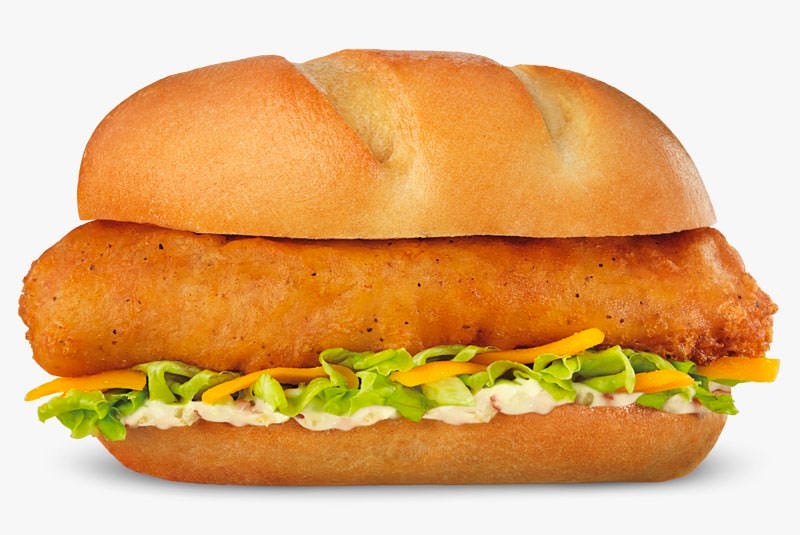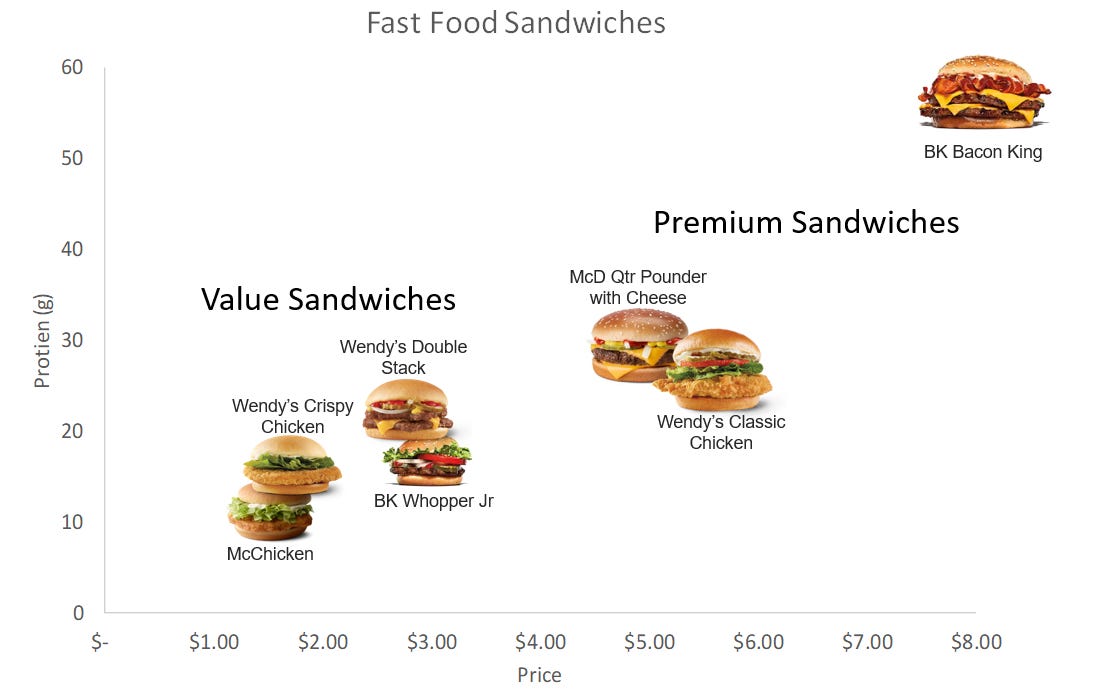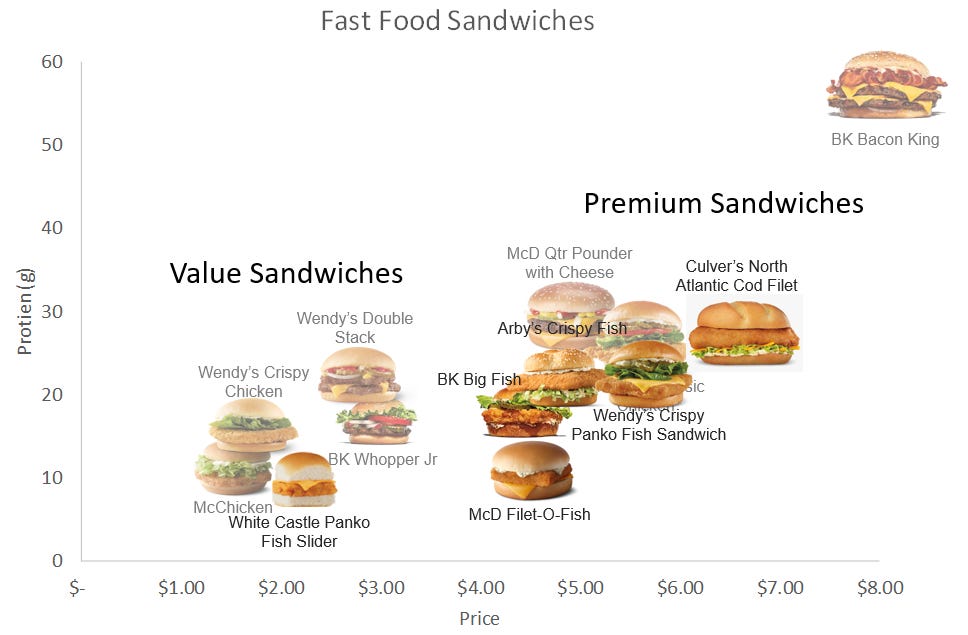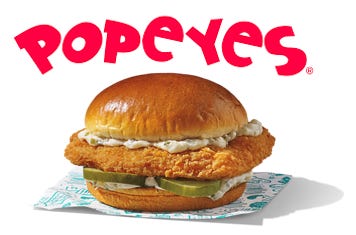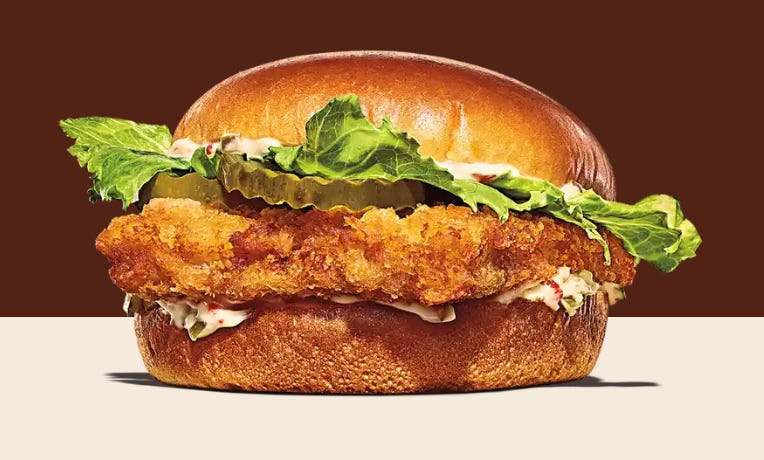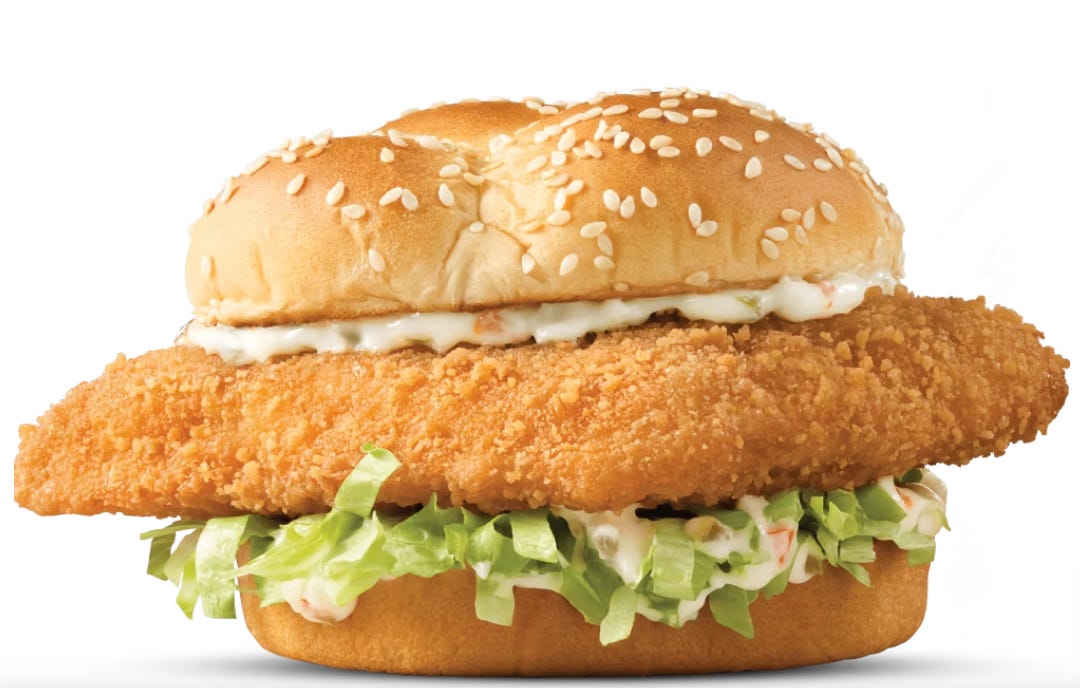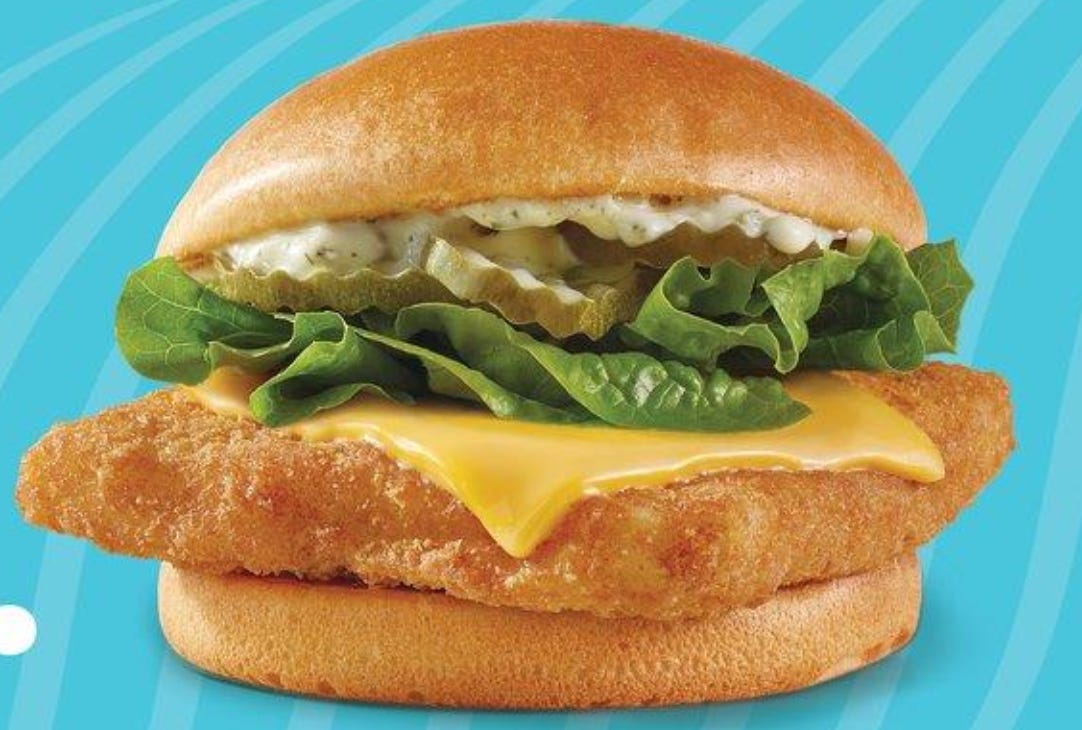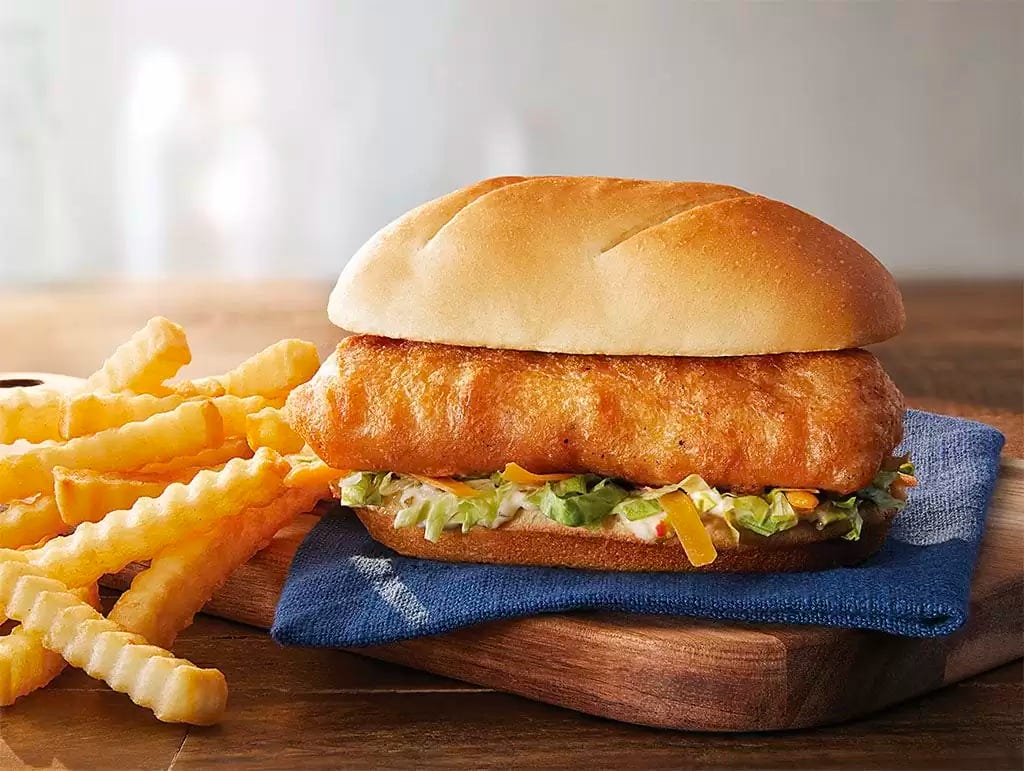It’s Lent, and that means that the nation’s fast food chains have rolled out their seasonal fish sandwich offerings, to compete for the business of hungry Catholics on the go.
But while many fast food chains do offer a fish sandwich option this time of year, how do those products stack up against their everyday staples of hamburgers and chicken sandwiches?
Is a fish sandwich a Lenten indulgence, or will you save enough on your lunch to put some extra in your Operation Rice Bowl bank for the world’s poor?
And on Good Friday — is a fast food fish sandwich more like your “one normal size meal,” or closer to one of the “two small meals which taken together would not exceed the main meal in quantity”?
As a former menu pricing manager for Wendy’s corporate (2010 to 2012), analyzing these questions for our readers was an assignment I couldn’t pass up.
The menu landscape: How fast food works
Fast food restaurants — or as the industry describes itself, QSRs or Quick Service Restaurants — tend to have two types of sandwiches: premium main menu sandwiches and value sandwiches.
As their name suggests, value sandwiches are cheaper. They are smaller sandwiches designed to provide customers with calories at a very affordable price, and although they definitely cost the restaurant less than a full price sandwich, they are typically lower margin items as well.
Here’s what that means, and some background on how fast food restaurants decide what to put on their menus, and how much to charge:
To start, no item on a QSR menu is priced below the cost of the ingredients, because a successful restaurant needs to keep its food cost down to about one-third of its revenue in order to make a profit, while paying for food, wages, and rent/location costs. So while no QSR menu items could properly be called a “loss leader”, value sandwiches are often much less profitable for the restaurant than the average menu item.
So if value sandwiches are less profitable, why do QSRs offer them?
Well, they expand the number of customers they can serve, and address more needs for the customers who come.
There are some very price-sensitive customers who only buy value sandwiches. But that’s not how most them get sold. Instead, it’s often the case that value items are combined with premium items by customers visiting a QSR.
For instance, a mom taking a van full of kids through the McDonald’s drive through on the way to a soccer game might get the kids all value sandwiches and value fries, while getting herself a premium chicken sandwich and a coffee.
The value sandwich might be both a more appropriate amount of food for small kids — the sandwiches included in kids meals are also value sandwiches — and their price makes the visit much more affordable than it would be if all kids had to be given full-size sandwiches.
Examples of value sandwiches include the McDonald’s McChicken and McDouble, the Wendy’s Jr Cheeseburger and Double Stack, and the Burger King Chicken Jr and Bacon Cheeseburger.
Value chicken sandwiches utilize a chopped and formed chicken patty rather than a breaded piece of whole chicken breast, making them like a large flat chicken nugget in texture. Value hamburgers typically have a patty of about 2oz. They retail between $1 and $3.
Premium sandwiches are larger, and retail for $4 or more on their own. Premiums are also the sandwiches included in QSR headline combos – meals made up of a sandwich, an order of fries, and a drink for a single price.
Selling combos is a key profit driver for QSRs, because fries and drinks are high margin items.
The most well-known fast food sandwiches are premium sandwiches, including the McDonald’s Quarter Pounder, the Burger King Whopper, and the Wendys Dave’s Single and Classic Chicken Sandwich.
Chick-fil-a is notable for a unique menu strategy — the restaurant sells only premium sandwiches.
White Castle plays at the other end of the spectrum, and sells only value sandwiches.
You can picture the continuum of fast food by looking at the relationship between sandwich price and protein content, which serves as a measure of the amount of meat and cheese on the sandwich.
The premium sandwiches live up to their name, the ingredients and taste tend to be much better, and the sandwiches are more filling. But if you’re seeking to get the maximum protein or maximum calories for your money, getting several value sandwiches is usually a better deal.
Someone who bought and ate five McChicken sandwiches a day would meet the FDA recommended 2,000 calories per day, though in the process he would have 135% of the recommended daily allowance of total fat and 120% of recommended daily sodium, while getting 83% of recommended protein and 70% of recommended carbohydrates.
Still, for $8.45 it’s a fair amount of value for the price.
Putting fish sandwiches on the map
So how do fish sandwiches compare in terms of price and nutritional value?
With one exception, the QSR chains I examined priced their fish sandwiches in the premium range, pricing them similarly to their basic premium chicken sandwich. However, the fish sandwiches were mostly lower in calories and lower in protein than other premium sandwiches.
I talked with friends still working in the QSR industry, who told me that in terms of food cost, fish sandwiches have a lower food cost than comparably priced chicken sandwiches. So it seems likely that while QSR chains are offering to those observing the Lenten fast a convenient non-meat option, they are also harvesting some additional profitability from their seasonal offering.
The one outlier among fish sandwiches in terms of price position is the White Castle Panko Fish Slider.
At $2.29, White Castle’s piscine offering is clearly priced as a value sandwich — as are all White Castle sandwiches — so although it offers a mere 10 grams of protein and 320 calories, it lands on the middle of the map among QSR fish sandwiches in terms of price for protein.
So when it comes to eating on the run on a meatless Friday, you’ll end up spending just as much as if you were buying another premium sandwich, but feeling less full afterwards. The ubiquitous McDonald’s Filet-O-Fish has 75% as many calories as a Quarter Pounder with Cheese and just 53% as much protein.
If you want the most filling fish sandwich for your dollar, your best option out of the chains I examined is the Flounder Fish Sandwich at Popeyes. Not only does the 26g of protein for $4.99 equal the value of a premium chicken sandwich, but the chain’s older logo looks like it says “Pope Yes.”
Really, what better choice is there for Catholics searching for a Lenten lunch?
Unfortunately, a lot of other people must have thought the sandwich looked like a great idea too, because when I dropped by to sample it on a recent afternoon, my local Popeyes was out of fish.
The taste test
While my primary beat at The Pillar is data journalism, it seemed a shame to write a whole story on the price and value of fish sandwiches without checking to see how they actually taste. So, having discussed the pricing and nutritional value of the range of offerings, which ones are the best tasting?
I tried to be moderately scientific in my approach. No sandwich was going to taste good after sitting in a fast food bag getting cold while I drove around to additional restaurants. So I went through each location, ordered the fish sandwich, then parked and ate one quarter of the sandwich, took notes, and moved on to the next.
I couldn't try every sandwich out there, but I tried a lot of them.
I’d separate the contenders out into a couple of tiers.
At the bottom I’d rank the McDonald’s Filet-O-Fish and the BK Big Fish. Those two were relatively similar in that the dominating tastes were the bready sweetness of the bun, and the tartar sauce.
If you have to pick between the two, go for the BK Big Fish. While it’s stretching thing to call Burger King’s option a “big” fish sandwich, it is larger than the Filet-O-Fish, which looked pretty tiny when I opened the McDonald’s box.
By calories and protein, the McDonald’s Filet-O-Fish is closer to a value sandwich than a full-size premium one. If you’re in the McDonald’s drive through on Good Friday, you might be in luck — one sandwich would fit the bill for one of a fasting day’s “small meals.” If you want more, you’ll be wishing for the 2-for-$5 deal of years past.
The Arby’s Crispy Fish Sandwich and the Wendy’s Crispy Panko Fish Sandwich are both a step up in size and taste.
The Arby’s filet is a long rectangle, rather than a standard square and it has a bit more of a bite to it, so it doesn’t fall apart while you’re eating. Arby’s does not smother the sandwich in tartar sauce, and the result is a sandwich in which the taste of fish is dominant.
The Wendy’s sandwich is also a more satisfying size, the breading is flavorful as is the fish, and the texture is great with very flakey fish and crisp breading.
The very best tasting fast food fish sandwich was the North Atlantic Cod Filet at Culver’s.
Culver’s offers a substantial, long and blocky piece of fish on a butter-toasted bun. There’s just a small amount of tartar sauce, some lettuce, and I’m even willing to forgive the odd choice of adding a bit of shredded cheddar cheese. The breading was crisp and the fish was flakey.
The Culver’s offering won’t compete with the fish and chips at your local pub, or even the offerings at your parish’s Knights of Columbus fish fry, but in the world of QSR fish sandwiches, it’s ahead of the school.

